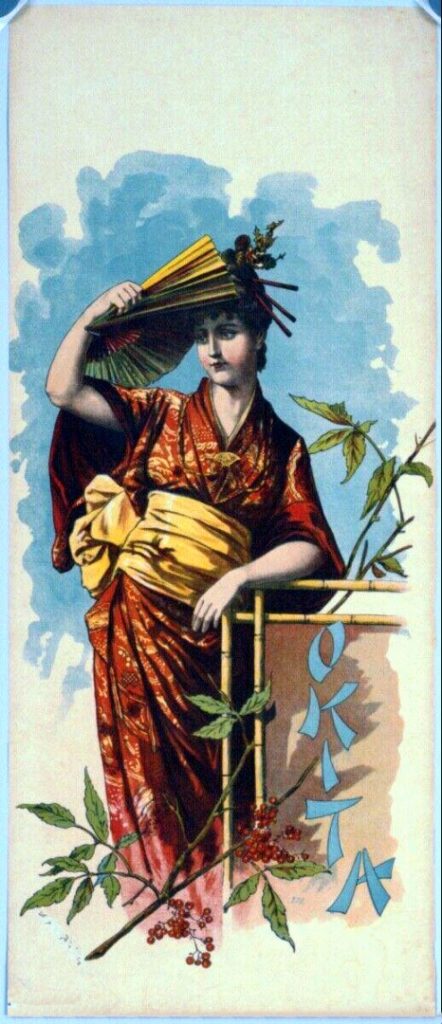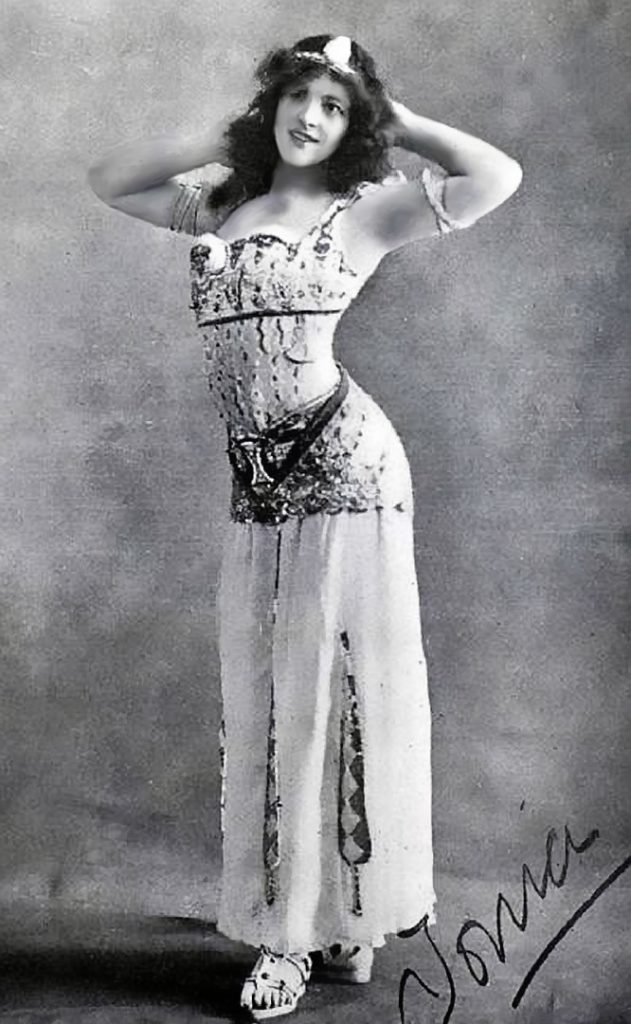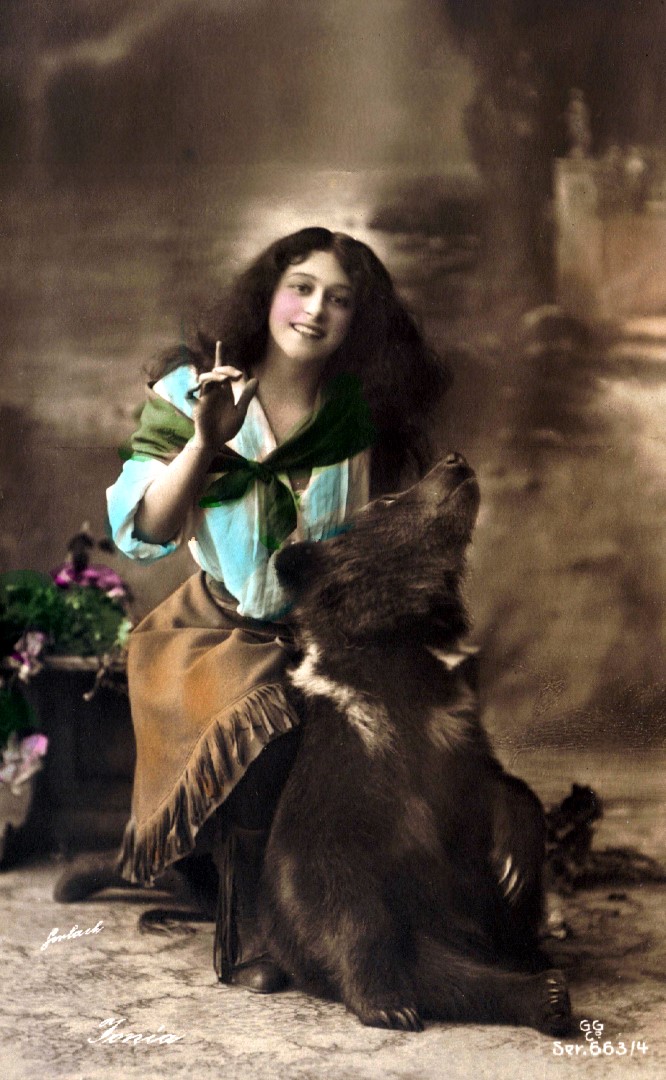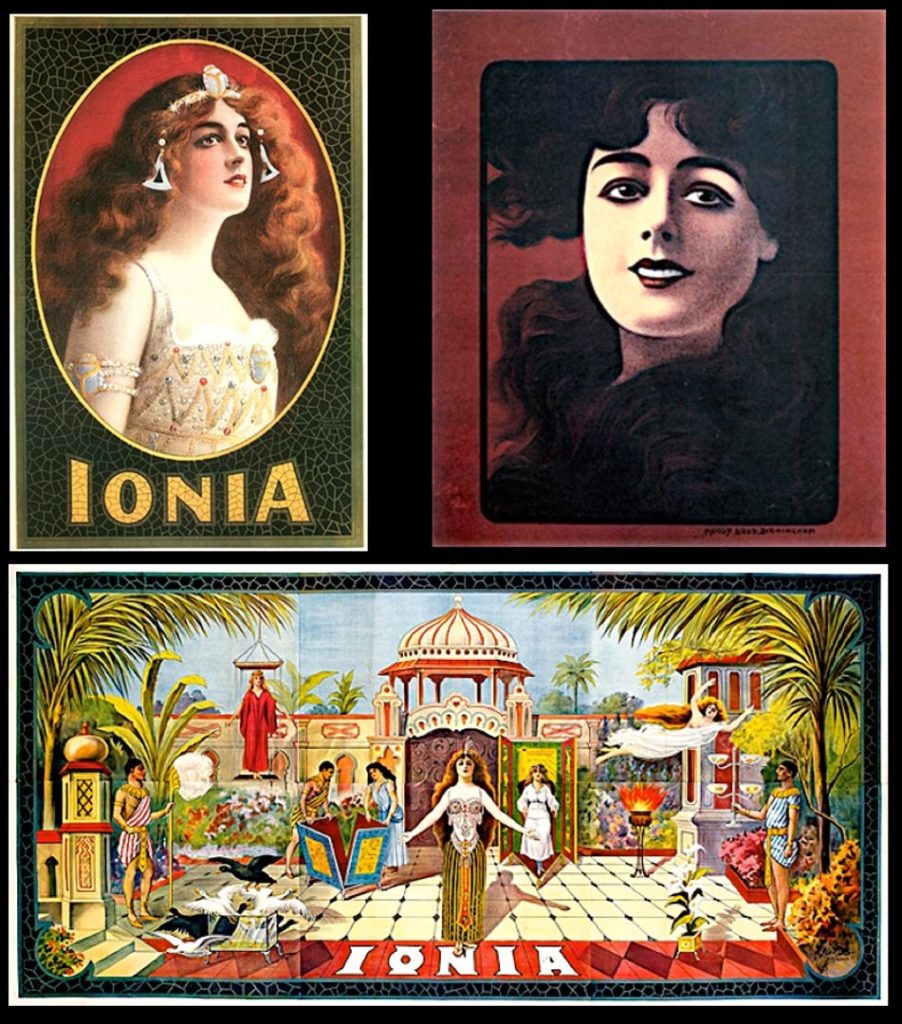Julia Ferret De Vere performed as Okita, making her the first non-Asian magician to perform as an Asian. This became a popular thing in magic, adding an exotic allure. Before we get to the amazing De Vere magic family where the women exceeded the men, we need to explain why performing as an Asian when you are not actually Asian is controversial in magic these days. At the time Okita performed, it would not have been controversial at all.
These days the subject is a little fraught with concerns about cultural approbation and stereotyping. Many white male magicians have portrayed Asian characters, mostly badly. While white British magician Ali Bongo was a creative genius, his Shriek of Araby act, which I saw live, made me cringe.
Some African American magicians, at a time when black performers were banned from the stage in the U.S., donned exotic Asian costumes and became Mahatmas, or Mystics, or Hindu Fakirs. If they did this, they could then perform on the same stages as white people. This was at the height of the Orientalism fad that ran from around 1870 to 1930. Chandu the Magician was born Clarence Hunter in 1920. Considered the last of the black magicians to become a high profile fake Hindu Fakir, he found significant success. He also trained a couple of notable performers in magic. The first was Arsenio Hall, who went on to movie and talk show host fame. The second was Jack Vaughn. I first met him just out of my teens when we worked on an Its Magic! together where I knew him as Goldfinger (and, of course, Dove). I thought he was so cool. He still is.
Playing a character different from your own racial identity was common in the movies, television, and on stage. The characterizations denied non-white actors roles, and the performances were often demeaning, such as when performers wore black face. Asian depictions by white actors tended to reinforce stereotypes and were often outright insulting. As just one example of why this issue is upsetting to many, Google Anna May Wong, a great actress who could only get demeaning roles. She even lost the role of Chinese character O-Lan in the film version of Pearl S. Buck’s The Good Earth to white actress Luise Rainer. Like so many non-white but talented performers, she eventually left the U.S. and the racism that plagued American entertainment.
Charles De Vere (1843-1931) was a British inventor of magic (co-developer of the Black Art Table) and a successful stage magician. His real name was Herbert Shakespeare Gardiner Williams. He opened a magic shop in London in 1873, and later moved to Paris where he opened a magic shop down the street from the Folies Begere. He later toured Europe with his own show. De Vere was also linked to two successful female stage magicians – his wife and daughter. Both had their own shows.

Okita (Julia Ferrett)
His wife was Julia Ferrett (1852-1916). She was the first known occidental performer to do an act as an “Oriental Magician”. She used the name Okita, but this was long before Theo Bamberg adopted the name Okito. I could not find a lot of details about her show or where she did it, but in a French History of the Cinema book I did find a mention: “On the stage of Melies’s (George Melies, magician and film pioneer) Theatre Robert-Houdin, the wife of Parisian magic dealer de Vere, has sometimes performed in Japanese illusion numbers as Okita, having been dressed and made up in Japanese Costume.” In her 1900 Japanese Recreations (Recreations Japonaises) poster, the little girl on the left is reportedly her four year old daughter Clementine.

They had eight children: Caroline, Claude, Camille, Charles, Constance (Elise), Cyril, Claire, and Clementine. Caroline and Elise were musical performers in the show. Camille was a magician who helped his father in the magic shop, but died very young.


Elise went on to a very successful career as a stage actress. She married Frank Joseph Goldsoll, a man with a checkered past and a bit of a scoundrel. Some considered him a conman and a high class swindler. He was convicted of selling fake jewelry. He tried to hoodwink the French army by delivering mules he had claimed were horses. Where all his wealth came from was unclear. He bought into Goldwyn Pictures, became President of the company, and forced Goldwyn out.

Ionia (Clementine Devere)
Much of what we know about Clementine (1888-1973) is thanks to the research of Charles Greene III. She toured for three years with her own big illusion show as Ionia, and then became a princess. Quite the fairy tale ending for her.

Clementine was inspired not just by her father, but by the many top magicians she saw at the Folies Bergere, including Harry Keller, Servais Le Roy and Herrmann. Her initial performances as Ionia were not as a magician, though.

At age 15, in 1904, she eloped with American circus animal tamer, Herman Weedon, who worked with lions, tigers, and bears. Her husband trained her how to handle the animals, and she appeared on stage at the Theatre Casino-Kursaal on her own for the first time in 1910 with six bears. That apparently proved unbearable, as she lost the bears and left Weedon.


Working with her father, in 1911 she created the Ionia illusion show. It was a major show, with six tons of equipment and nine people. It was an Egyptian themed show that toured to Berlin, Copenhagen, Paris, England, and Vienna. Vienna was the last stop, and she retired from performing after just three years with the show. She did do a pantomime act in Vienna after closing the illusion show.

Her show had beautiful posters. There were reportedly 22 different posters produced, but only 11 of them are known. We include all 11.

The apparent reason for her retirement was her relationship with and eventual marriage in 1919 to Prince Vladimir Eristavi-Tchitcherine of Russia. He was a prince, but not wealthy. Still, it made her a princess. There are a lot of questions about her post-magic life. Greene interviewed people who knew her, but they did not know about her life in magic. It was something she apparently never spoke about. She divorced her prince in 1928, but retained the title of Princess. She lived a life of luxury until her death in 1973, but it is a mystery as to where her money came from.





